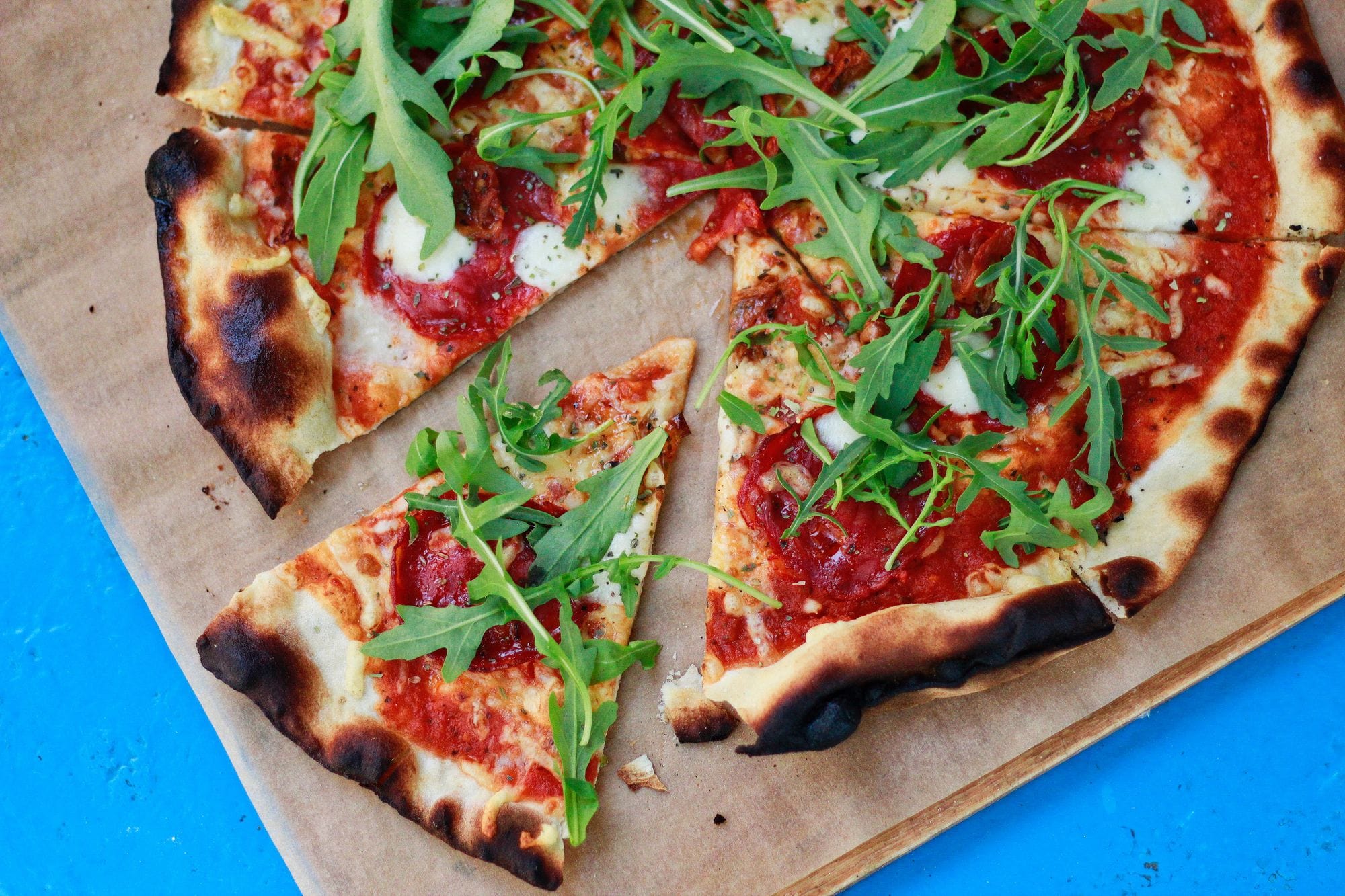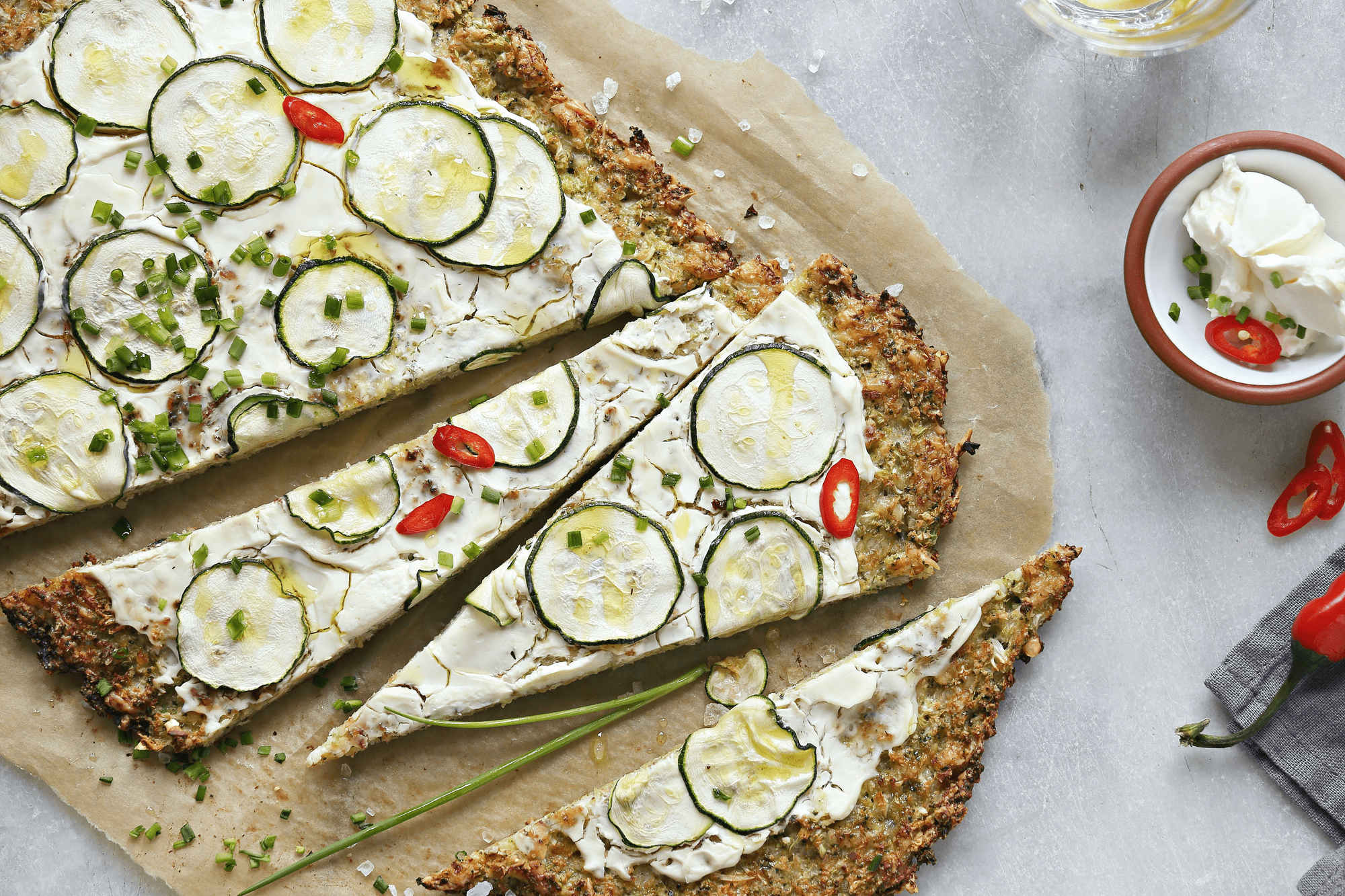Low-carb grain alternatives are popular in grocery stores and restaurants throughout the country, from zucchini noodles to spaghetti squash and lettuce wraps. Cauliflower crust pizza in particular has taken the world by storm – but how healthy is this swap in reality?
How Bad Is Regular Pizza?
We may have heard the resident pizza lover in our lives claim that pizza satisfies all of the major food groups – but in reality, the proportions and quality of the ingredients are far from what makes a healthy plate.
Pizza is loaded with fat-rich cheese and made from refined flour, and certain toppings like pepperoni and sausage can be extremely high in sodium and saturated fat. Frozen and fast food pizzas tend to have higher amounts of preservatives and artificial colorings that can have an impact on our health.
According to Nutritionix, one slice of DiGiorno’s Rising Crust Pepperoni Pizza can contain 310 calories – and as we all know, having one slice of pizza is unheard of. Multiply that number by 3 slices, and we can consume 930 calories! In addition, just one slice of this pizza contains 4.5g of saturated fat, which is a whopping 23% of our daily value.

One slice of this pizza also contains 38g of carbohydrates – and the refined flour used in the crust may be to blame. Refined carbohydrates tend to raise our blood sugar faster than complex, non-processed carbs, which can lead to an increased risk of diabetes if we eat them frequently and in large amounts.
If we have a 3-slice portion of the DiGiorno pizza, we can consume 114g of carbs – 39% of our daily value, and a greater chance of a larger and longer-lasting blood sugar spike than a single slice.
This is not to say that all pizzas are created equal, however. Handmade pizzeria pizzas are usually crafted from whole, fresh ingredients and are free from preservatives. You can swap out heavier pizza toppings and sauces for pesto, fresh veggies, and other alternatives.
And, more recently, many pizza makers have been swapping out refined pizza crust for cauliflower-based crust – but does this actually make pizza a healthy food?

Cauliflower Crust Pizza by the Numbers
Cauliflower is a neutral vegetable that makes it a wonderful base for healthier swaps to unhealthy foods, like buffalo wings and pizza crust. Let’s take a look at Milton’s Cauliflower Crust Roasted Vegetable Pizza, and see how the numbers compare to DiGiorno.
- 1 slice of this pizza contains 230 calories – just 80 calories less than DiGiorno.
- 1 slice contains 5g of saturated fat – more than the 4.5g in DiGiorno.
- 1 slice contains 27g of carbohydrates – 11g less than DiGiorno.
- The sugar and fiber content for each pizza is the same: 2g of dietary fiber and 5g of sugar.
- 1 slice of Milton’s has less sodium than DiGiorno: 570mg versus 740mg. However, 570mg does comprise 24% of our daily value.
When looking at the numbers, the benefits of eating cauliflower crust pizza over regular pizza seem modest. You get a lower calorie, sodium, and carb count, but more fat – even with veggie toppings over pepperoni.
The main difference is in the type of carbohydrates you eat with cauliflower crust – and if you test your blood sugar with each of these pizzas, you might see beneficial results when choosing the plant-based alternative. But everyone has different blood sugar responses for the same foods, so these results are not guaranteed.
Of course, Milton and DiGiorno are only two brands who create these delicious treats, and the nutrition facts for other types of pizzas may vary. Remember to read the labels before you buy, and choose the option that is best for you. Keep your servings small and remember to multiply these numbers by your portion sizes to get an accurate calorie, carb, and fat count.
In conclusion, you can make pizza healthier by swapping the refined flour crust for cauliflower or whole grain flour, using fresh tomato sauce free from added sugar, and choosing low-fat cheeses and lean and plant-based toppings. However, pizza is still a treat that should be eaten in moderation – even with cauliflower crusts.
Making smarter choices when choosing the treats we eat can help us manage our blood sugar and support our weight loss journeys. Remember, moderation is key – and make healthy swaps whenever possible.





